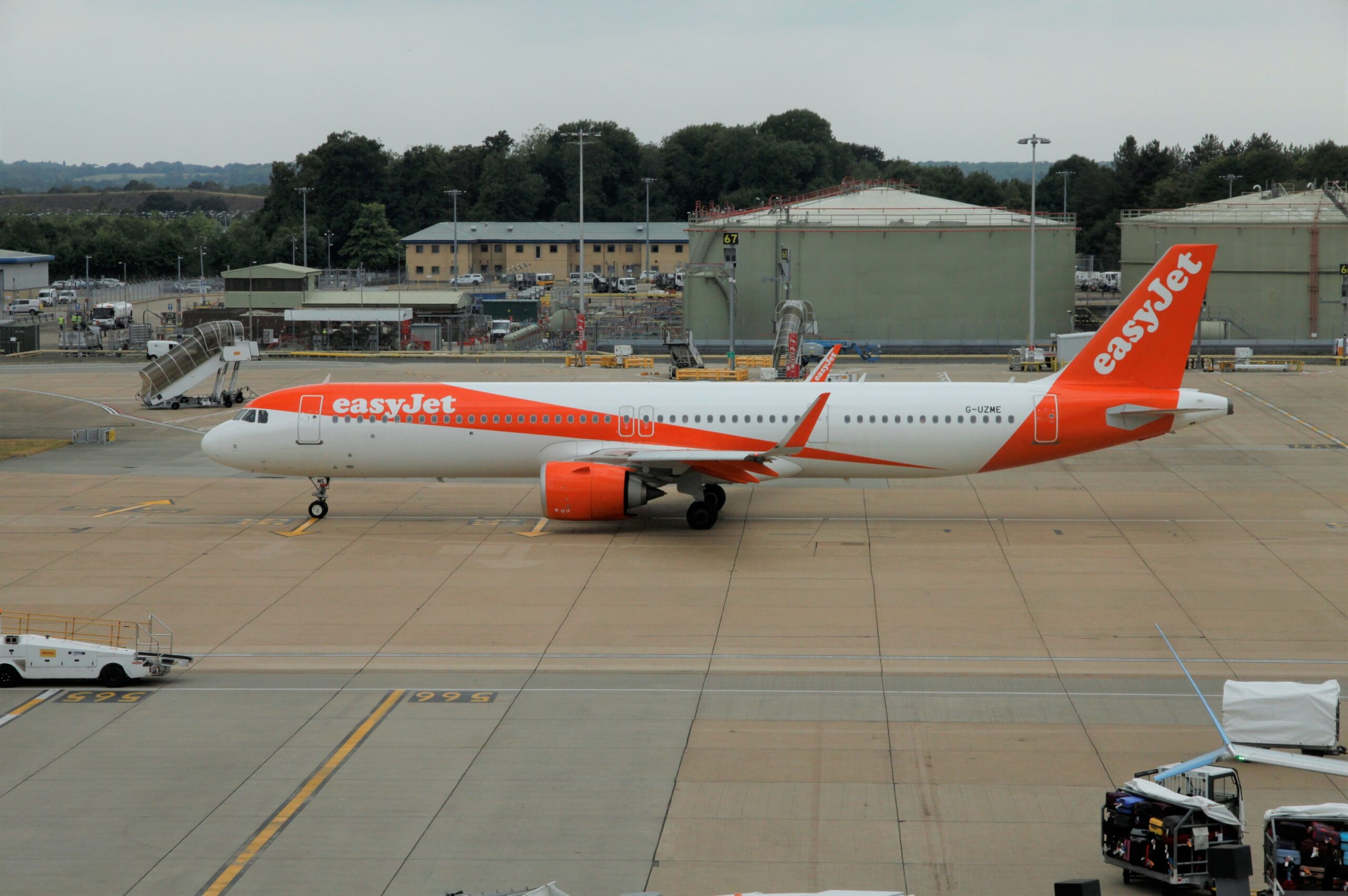
UPDATE – Numerous flight cancelations and other operational disruptions have cost easyJet £133 million extra in its third quarter of the financial year 2022, which runs from April to June. Labor shortages with the airline itself as well as operational issues at various airports it flies from like London Gatwick, Luton, and Amsterdam Schiphol, badly affected the schedule in Q3. The carrier says it has now built-in “additional resilience” into Q4 until September to improve reliability. Flight disruptions cost easyJet £133 million in Q3.
easyJet provided a Q3 trading update on July 26. Compared to the same quarter in 2021, the number of flights soared from 21.682 to 140.045 and the number of passengers from 2.985 to 22.001. It operated at 87 percent capacity compared to 2019 and a load factor of 88 percent. The recovery peaked in May when it flew 48.335 passengers. That’s when labor and airport capacity constraints started to show, resulting in many cancelations. The carrier said that it was able to rebook seventy percent of its customers on other flights within 24 hours, thanks to its high-frequency network.
The issues, which resulted in Chief Operating Officer Peter Bellew quitting his job in June, are seen by easyJet as a one-off and will not repeat themselves again next year. “Delivering for customers this summer remains our highest priority. During the quarter we carried seven times more customers than the same time last year and operated 95 percent of our schedule. We have taken action to build the additional resilience needed this summer and the operation has now normalized.” CEO Johan Lundgren says in the trading update.
Pre-tax loss of £114 million
easyJet ended Q3 with a £-114 million pre-tax headline loss compared to £-318 million in the same months last year. This includes £36 million from balance sheet revaluations. EBITDAR as £109 million. Revenues increased to £1.755 billion from £213 million last year, of which £1.152 billion from tickets and £603 million from ancillaries, up from £63 million last year. Per seat, ancillary revenues were up to £19.47 from £13.47, notably from check-in luggage and what it calls ‘bundles’. In Q2, it reported a £545 million headline loss.
The higher level of capacity compared to last year drove expenses up to £1.869 billion compared to £531 million. Expenses also include high fuel costs, although easyJet is hedged at 83 percent for Q4 when it expects to operate at ninety percent capacity compared to 2019 and for which it is 71 percent booked. Fuel is hedged at sixty percent for HY1 of FY23 (October-December) and 33 percent for HY2. The airline has £3.9 billion in cash and cash equivalents and reduced its debt from £0.6 billion in March to £0.2 billion at the end of June.
Building the network in Portugal
In the coming winter season, easyJet plans to grow its presence in Portugal, after securing eighteen daily slots at Lisbon Airport. This makes it the second-biggest carrier at the airport. It said on July 27 that it will base another three Airbus A321neo’s in Lisbon, which will allow it to launch 21 new routes and increase frequencies to eight countries. easyJet will offer 32 routes from Lisbon, thirty international and two domestic ones. By the end of this year, the carrier will have nineteen aircraft based in Portugal to operate on over eighty routes.
As reported last week, easyJet confirmed an order for 56 Airbus A320neo family aircraft at the Farnborough Airshow after approval at the Annual General Meeting. It will also convert eighteen A320neo into A321neo aircraft. The new aircraft are for replacement of the A319 fleet, of which it still has 99 with an average age of thirteen years.
Active as a journalist since 1987, with a background in newspapers, magazines, and a regional news station, Richard has been covering commercial aviation on a freelance basis since late 2016.
Richard is contributing to AirInsight since December 2018. He also writes for Airliner World, Aviation News, Piloot & Vliegtuig, and Luchtvaartnieuws Magazine. Twitter: @rschuur_aero.





